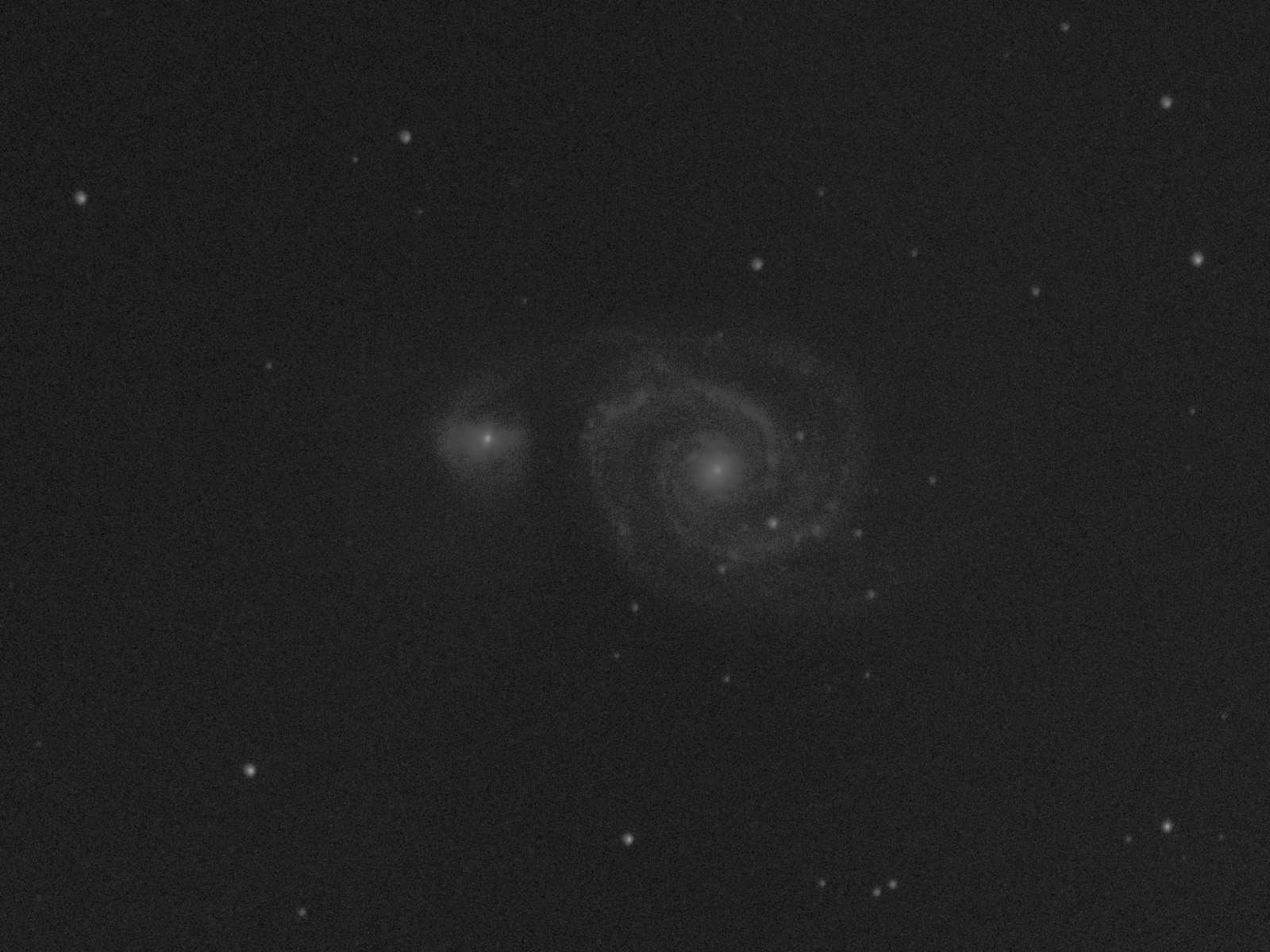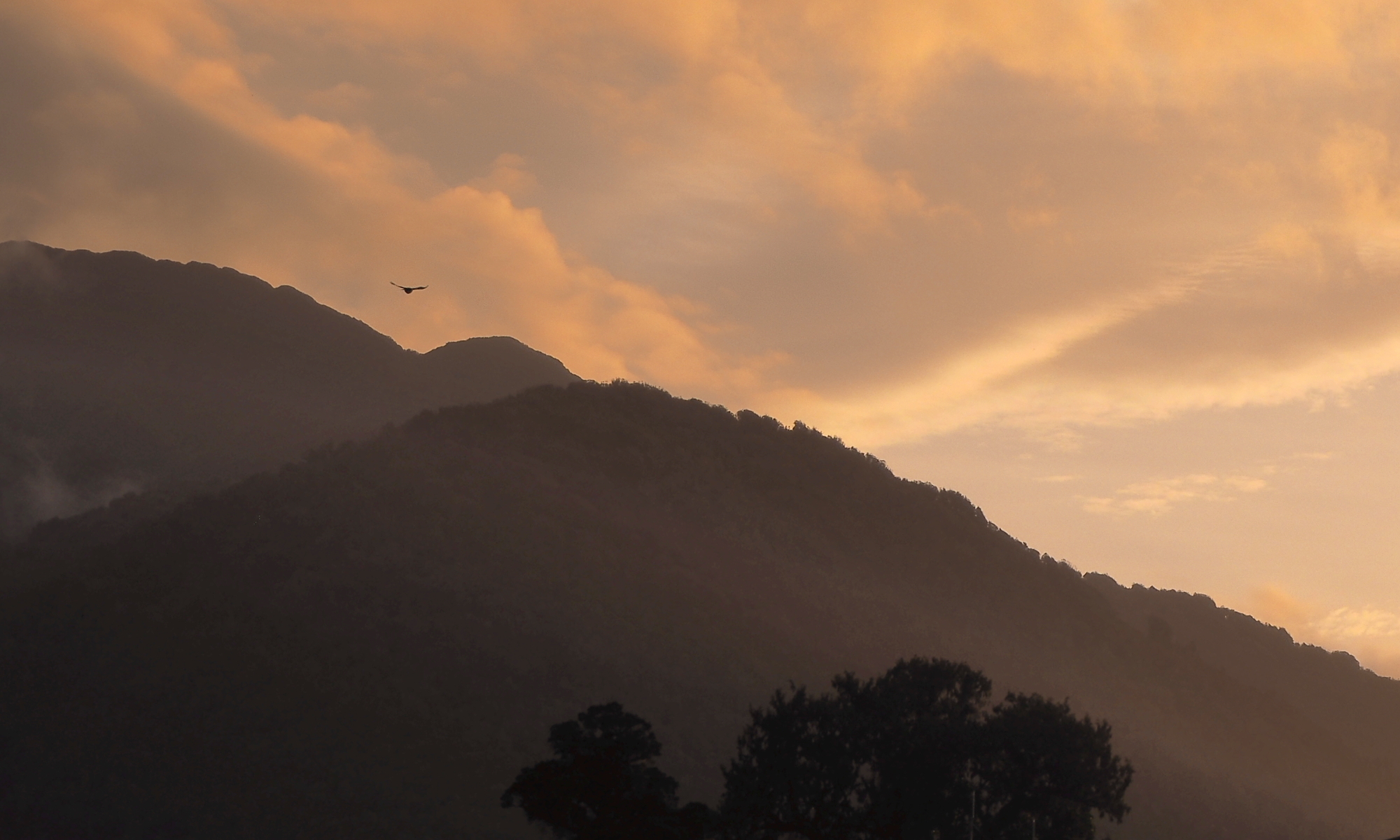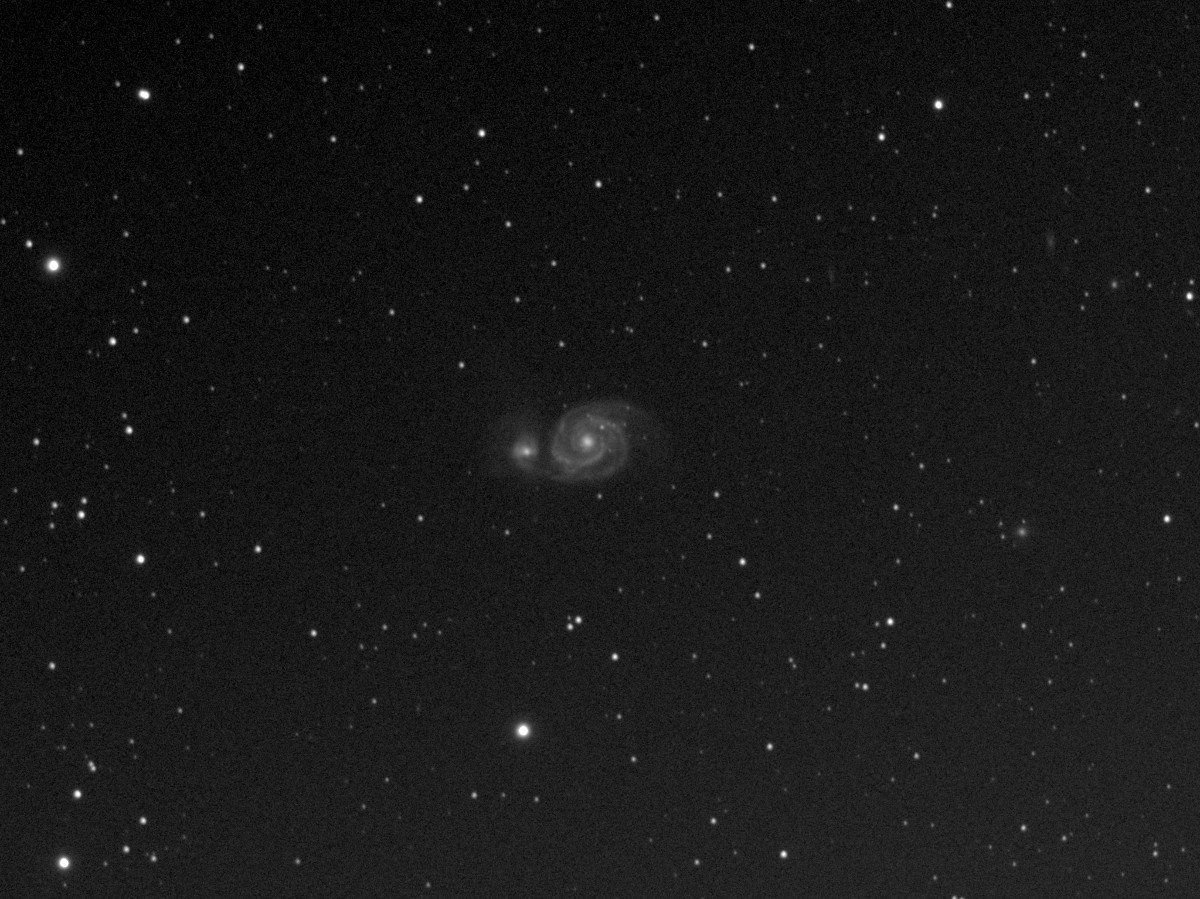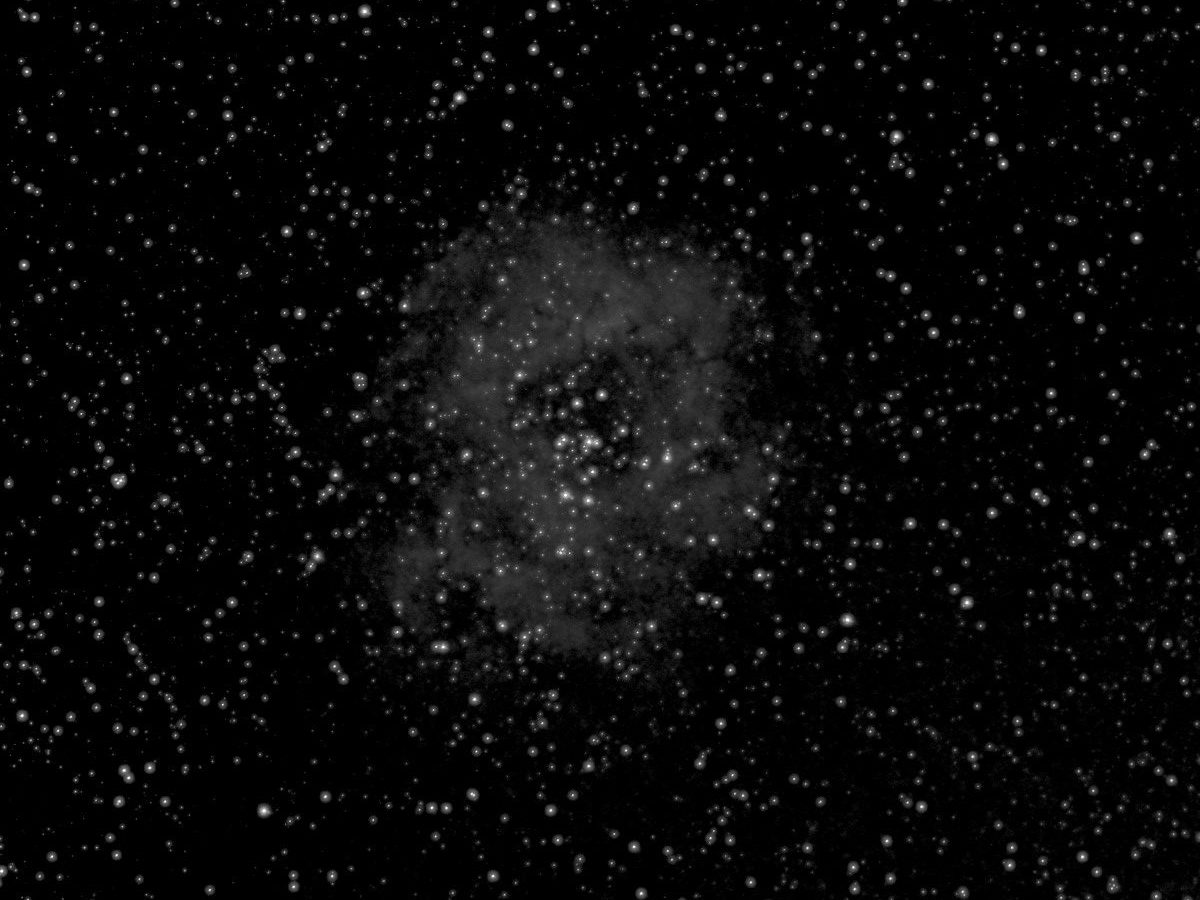
This is a stack of over 70-some 30 second exposures of the Whirlpool galaxy. While there is significant detail, the dynamic range is pathetic. I think this is because 1) the individual exposures are short, and 2) there was a nearly full moon.
However, I’ve seen beautiful photos from stacks of hundreds of 3 second exposures, and the cumulative time from my frames is larger. So undoubtedly my processing technique is faulty. OTOH, I’m not sure of the magnitude of the effect from the moon. Further investigation is required…




